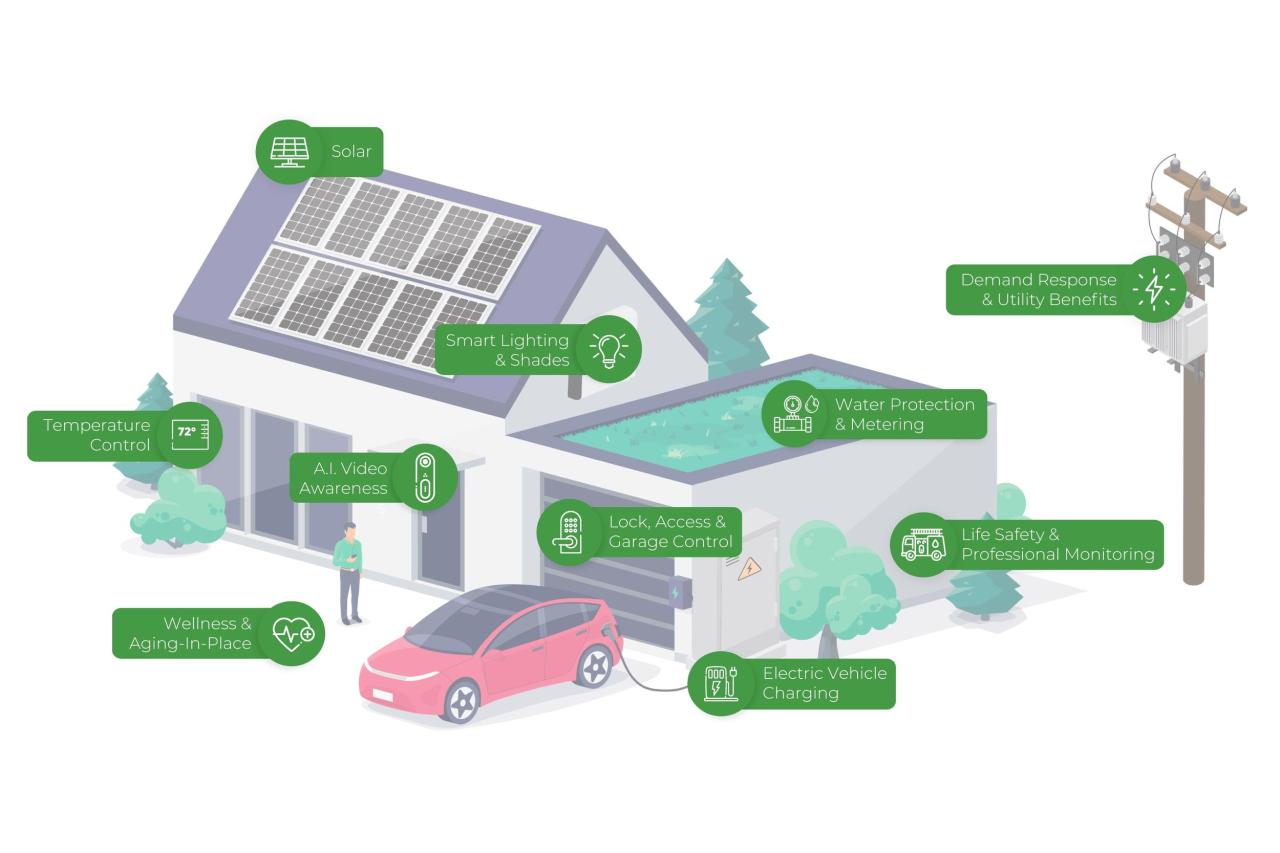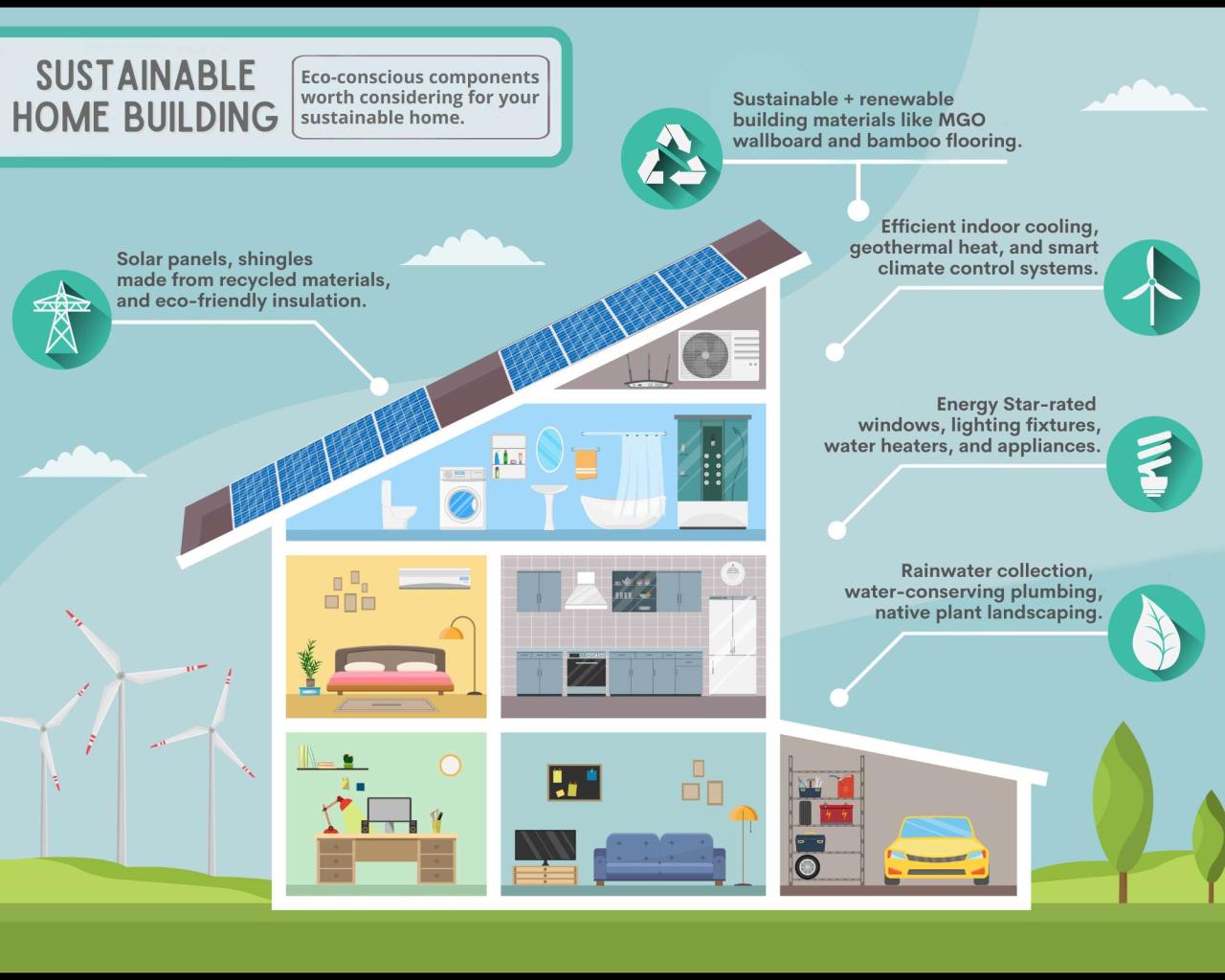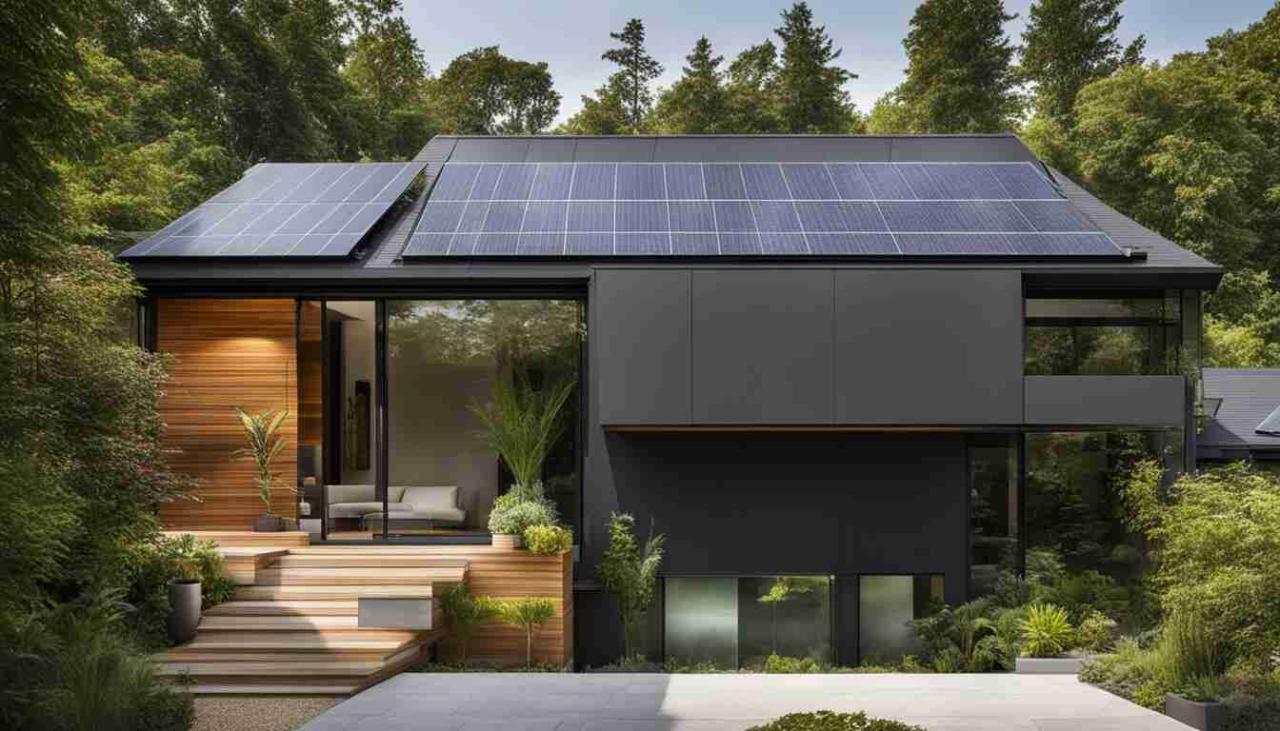Delving into the realm of sustainable living, this piece delves into the ways in which smart home exteriors play a crucial role in supporting eco-friendly practices. With a focus on innovation and efficiency, this discussion aims to shed light on the intersection of technology and sustainability.
Exploring the various aspects of smart home exteriors that contribute to a greener lifestyle, this article aims to inform and inspire readers to consider the impact of their living spaces on the environment.
Importance of Smart Home Exteriors in Sustainable Living

Smart home exteriors play a crucial role in promoting sustainable living practices by incorporating eco-friendly materials and energy-efficient designs. These elements not only reduce the environmental impact of buildings but also contribute to a healthier and more sustainable future.
Examples of Eco-Friendly Materials
- Bamboo: Known for its rapid growth and renewability, bamboo is a sustainable alternative to traditional wood for exterior cladding and decking.
- Recycled Metal: Using recycled metal for roofing and siding helps reduce waste and energy consumption associated with mining and manufacturing new materials.
- Recycled Plastic: Some smart homes incorporate recycled plastic materials for exterior components like fences, decking, and trim, diverting plastic waste from landfills.
Impact of Energy-Efficient Designs
Energy-efficient designs in smart home exteriors, such as proper insulation, high-performance windows, and solar panels, significantly reduce energy consumption and carbon footprint. By optimizing energy use, smart homes can lower utility bills and decrease greenhouse gas emissions, contributing to a more sustainable environment for future generations.
Design Strategies for Sustainable Smart Home Exteriors
Innovative design strategies play a crucial role in ensuring that smart home exteriors support sustainability. These strategies not only reduce environmental impact but also enhance the overall efficiency and functionality of a home.
Landscape Design for Sustainability
Landscaping is a key component of sustainable smart home exteriors. By incorporating native plants, green roofs, rain gardens, and permeable surfaces, homeowners can reduce water consumption, improve air quality, and support local biodiversity. Additionally, strategic placement of trees and shrubs can provide natural shading, reducing the need for artificial cooling systems.
Traditional vs. Modern Design Approaches
When comparing traditional home exterior designs with modern sustainable approaches, it becomes evident that the latter prioritizes energy efficiency, eco-friendly materials, and innovative technologies. Traditional designs often rely on resource-intensive materials and outdated construction techniques, leading to higher energy consumption and environmental impact.
In contrast, modern sustainable approaches focus on passive solar design, natural ventilation, recycled materials, and smart technologies to minimize carbon footprint and maximize energy savings.
Technology Integration for Sustainable Smart Home Exteriors
Smart home exteriors can benefit greatly from the integration of various technologies that promote sustainability and eco-friendliness. By incorporating innovative solutions like solar panels, smart irrigation systems, and IoT devices, homeowners can optimize energy usage, reduce waste, and contribute to a more sustainable environment.
Solar Panels
Solar panels are a popular technology integrated into smart home exteriors to harness the power of the sun and generate renewable energy. By installing solar panels on rooftops or in the yard, homeowners can significantly reduce their reliance on traditional energy sources and lower their carbon footprint.
This not only helps in saving money on electricity bills but also contributes to a greener and more sustainable lifestyle.
Smart Irrigation Systems
Smart irrigation systems use sensors and weather data to efficiently water plants and lawns, avoiding overwatering and wastage. By automating the irrigation process based on real-time conditions, these systems help conserve water resources and promote sustainable landscaping practices. This technology ensures that plants receive the right amount of water at the right time, leading to healthier gardens and reduced water consumption.
IoT Devices for Energy Optimization
The Internet of Things (IoT) devices play a crucial role in optimizing energy usage within smart home exteriors. From smart thermostats to energy-efficient lighting systems, IoT devices enable homeowners to monitor and control their energy consumption remotely. By adjusting temperature settings, turning off lights, or managing appliances through IoT applications, homeowners can reduce energy waste and adopt more sustainable practices in their daily lives.
Automation for Efficiency
Automation is another key feature that enhances the efficiency of sustainable smart home exteriors. By automating tasks such as adjusting lighting levels, controlling shades based on sunlight exposure, or managing water usage through smart systems, homeowners can streamline their routines and minimize energy waste.
Automation not only improves the overall functionality of smart home exteriors but also contributes to a more sustainable and eco-friendly living environment.
Maintenance and Long-Term Sustainability of Smart Home Exteriors

Smart home exteriors are designed to not only be eco-friendly and sustainable but also to require minimal maintenance over the long term. By incorporating best practices for maintaining eco-friendly features, utilizing durable sustainable materials, and implementing strategies for long-term sustainability and efficiency, homeowners can ensure that their smart home exteriors remain environmentally conscious for years to come.
Best Practices for Maintaining Eco-Friendly Features
One of the key best practices for maintaining eco-friendly features in smart home exteriors is regular inspections and cleaning. By regularly inspecting features such as solar panels, rainwater harvesting systems, and green roofs, homeowners can identify any issues early on and prevent them from escalating.
Additionally, using non-toxic cleaning products and methods can help preserve the integrity of eco-friendly materials.
Durability of Sustainable Materials Used in Home Exteriors
The sustainable materials used in smart home exteriors are chosen for their durability and longevity. Materials such as recycled wood, metal roofing, and composite decking are designed to withstand the elements and require minimal maintenance. By investing in high-quality sustainable materials, homeowners can ensure that their smart home exteriors remain in good condition for many years.
Strategies for Ensuring Long-Term Sustainability and Efficiency
Implementing strategies such as proper insulation, energy-efficient windows, and smart irrigation systems can help ensure the long-term sustainability and efficiency of smart home exteriors. By reducing energy consumption and water usage, homeowners can lower their environmental impact and save on utility costs.
Regular maintenance and upgrades to technology can also help optimize the performance of sustainable features in smart home exteriors.
Summary

In conclusion, the integration of smart home exteriors into sustainable living practices offers a promising pathway towards a more environmentally conscious future. By embracing cutting-edge design strategies and technology, homeowners can not only reduce their carbon footprint but also create spaces that prioritize efficiency and longevity.
Clarifying Questions
How can smart home exteriors contribute to sustainable living?
Smart home exteriors utilize eco-friendly materials and energy-efficient designs to reduce environmental impact and promote sustainable practices.
What are some examples of innovative design strategies for sustainable smart home exteriors?
Innovative design strategies may include landscaping for enhanced sustainability, comparison of traditional versus modern approaches, and integration of technology like solar panels.
How can automation enhance the efficiency of sustainable smart home exteriors?
Automation can optimize energy usage and promote sustainable practices by regulating systems such as smart irrigation and IoT devices.
What are the best practices for maintaining eco-friendly features in smart home exteriors?
Maintaining eco-friendly features involves regular upkeep, proper care of sustainable materials, and ensuring long-term sustainability through strategic maintenance strategies.









